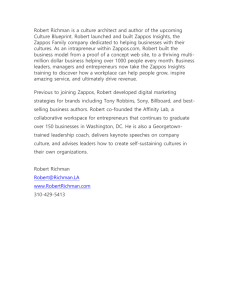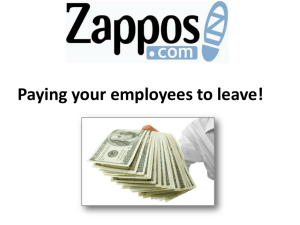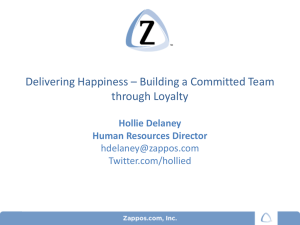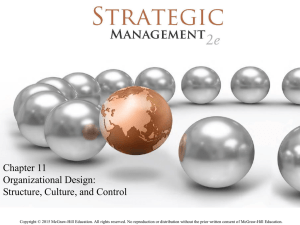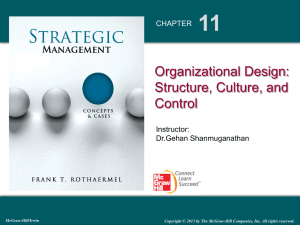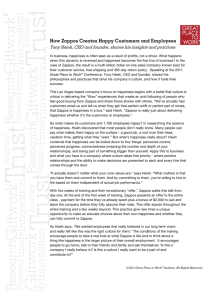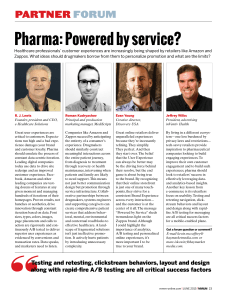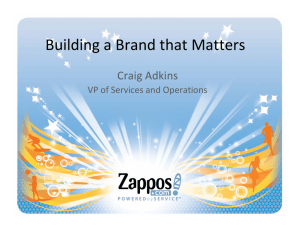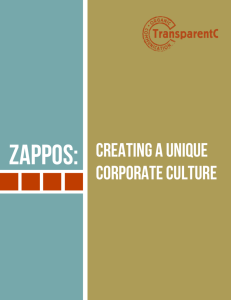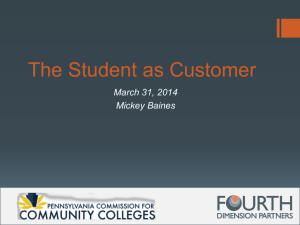If the Culture Fits
advertisement
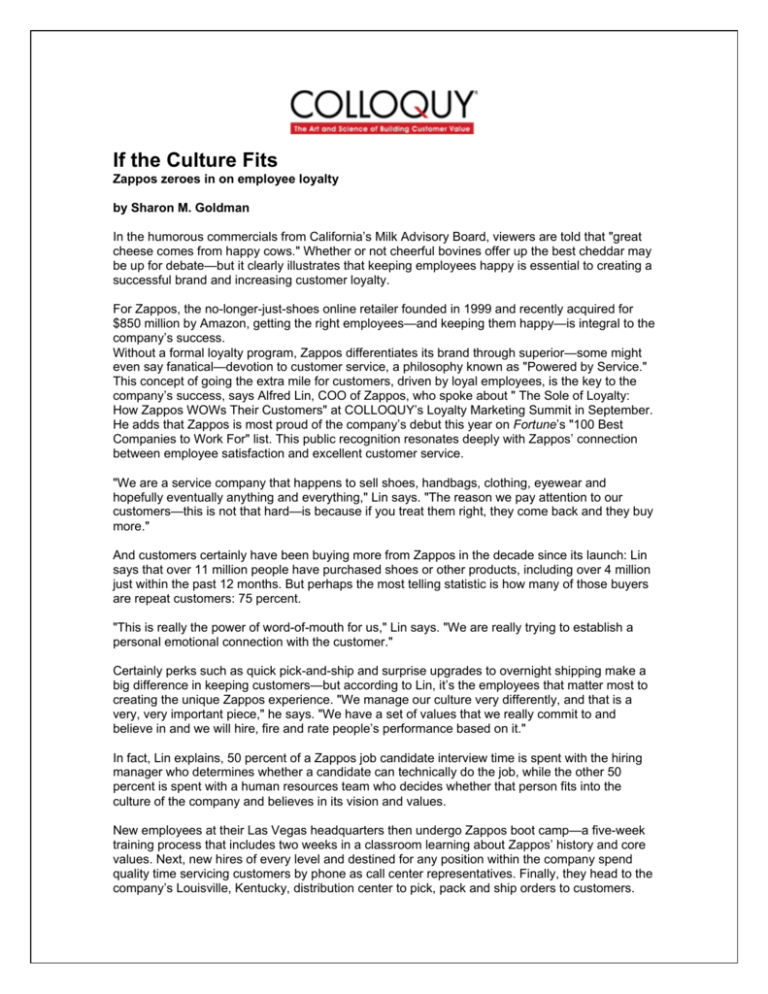
If the Culture Fits Zappos zeroes in on employee loyalty by Sharon M. Goldman In the humorous commercials from California’s Milk Advisory Board, viewers are told that "great cheese comes from happy cows." Whether or not cheerful bovines offer up the best cheddar may be up for debate—but it clearly illustrates that keeping employees happy is essential to creating a successful brand and increasing customer loyalty. For Zappos, the no-longer-just-shoes online retailer founded in 1999 and recently acquired for $850 million by Amazon, getting the right employees—and keeping them happy—is integral to the company’s success. Without a formal loyalty program, Zappos differentiates its brand through superior—some might even say fanatical—devotion to customer service, a philosophy known as "Powered by Service." This concept of going the extra mile for customers, driven by loyal employees, is the key to the company’s success, says Alfred Lin, COO of Zappos, who spoke about " The Sole of Loyalty: How Zappos WOWs Their Customers" at COLLOQUY’s Loyalty Marketing Summit in September. He adds that Zappos is most proud of the company’s debut this year on Fortune’s "100 Best Companies to Work For" list. This public recognition resonates deeply with Zappos’ connection between employee satisfaction and excellent customer service. "We are a service company that happens to sell shoes, handbags, clothing, eyewear and hopefully eventually anything and everything," Lin says. "The reason we pay attention to our customers—this is not that hard—is because if you treat them right, they come back and they buy more." And customers certainly have been buying more from Zappos in the decade since its launch: Lin says that over 11 million people have purchased shoes or other products, including over 4 million just within the past 12 months. But perhaps the most telling statistic is how many of those buyers are repeat customers: 75 percent. "This is really the power of word-of-mouth for us," Lin says. "We are really trying to establish a personal emotional connection with the customer." Certainly perks such as quick pick-and-ship and surprise upgrades to overnight shipping make a big difference in keeping customers—but according to Lin, it’s the employees that matter most to creating the unique Zappos experience. "We manage our culture very differently, and that is a very, very important piece," he says. "We have a set of values that we really commit to and believe in and we will hire, fire and rate people’s performance based on it." In fact, Lin explains, 50 percent of a Zappos job candidate interview time is spent with the hiring manager who determines whether a candidate can technically do the job, while the other 50 percent is spent with a human resources team who decides whether that person fits into the culture of the company and believes in its vision and values. New employees at their Las Vegas headquarters then undergo Zappos boot camp—a five-week training process that includes two weeks in a classroom learning about Zappos’ history and core values. Next, new hires of every level and destined for any position within the company spend quality time servicing customers by phone as call center representatives. Finally, they head to the company’s Louisville, Kentucky, distribution center to pick, pack and ship orders to customers. This process screens out people who won’t provide good service, Lin explains. "If you’re an accountant or a general counsel or a software developer who thinks this kind of work is beneath you, it’s probably a good indicator that you are not going to provide good service internally," he says. "We tell people that’s what they need to do before they start their job and a lot of people just self-select out." Then there is the offer of cold, hard cash—if you quit. Trainees who decide to leave are given $2,000 for their trouble, says Lin. While it might seem contradictory to reward employees for leaving, he points out that the cost of a bad hire is so expensive that the handouts are worth every penny. "If you are really, really good at interviewing, then maybe you’re right 60-70 percent of the time," he says. "That means 30-40 percent of your hires are not right or not committed—so why not offer them $2,000 to save the company some hassle and have them find what they would love to do?" The bottom line, says Lin, is that getting the culture right will make everything else fall into place in terms of improving customer service and loyalty. One example he likes to cite is about a woman who bought a wallet and decided to return it—but forgot about the $150 she had in the wallet. Shortly thereafter, she received an envelope containing the money and a friendly note from someone in Zappos’ distribution center. "That’s an example of where someone makes $10-15 per hour, and they still did the right thing," says Lin. "And we don’t have any policy about this. We don’t even have scripts." Today, Lin says the company is working on codifying the company’s value proposition for the future , Zappos’ true mission, he says, boils down to "delivering happiness." "One of our customers actually emailed us and said, ’Hey, you know, Zappos is really about happiness in the box,’" he says. "We really believe it’s about how you make people feel because that’s what they remember. Those are the stories they will tell." And delivering that happiness comes right back around to the company’s core value of keeping its employees content. Remaining true to that vision includes keeping the company’s business highly transparent and giving employees control over their present and future. For instance, the company now has 400-500 employees on Twitter, including CEO Tony Hsieh, who boasts over 1 million followers. In addition, each month employee questions are compiled, answered by Hsieh, Lin and others on the company’s management team, and then published to everyone in the company. At the end of each day, every single employee also gets the company’s sales report for every brand. "Some people express concerns that the information will get into the wrong hands, but we say it actually helps us more. We think that the level of transparency is demanded not just by your customers but your employees. It’s really changing the way business is being done." Finally, Zappos believes keeping employees focused on their own personal career visions is an important path to worker satisfaction. "We ask our employees, what do they really want to do? It can’t just be about getting your paycheck." It’s important, Lin says, for Zappos managers to inspire not just their customers but their employees to do something greater than themselves. "This is the evolution of the Zappos brand," he says. Employees are empowered to choose their own career path in the company, he explains, including training toward becoming, say, a buyer: "It makes people happier just to be in control." Even during what proved to be a wrenching set of layoffs in late 2008, in which 8% of employees were let go, Zappos proved devoted to its team, with generous severance packages that included extra pay and health insurance as well as open communication about the cuts. "It was a very, very hard decision," Lin admits, but points out that the way the company handled the layoffs was as gentle as such things can be, and remained true to the company’s employeefocused, customer-service-oriented culture. "We tried to do it really quickly and treat the employees correctly. And at the end of the day of the layoffs, the people who were leaving and the people who were still part of the company spontaneously got together and had one last drink together. So I think it’s a testament to our culture that our employees wanted to do that." Copyright COLLOQUY
